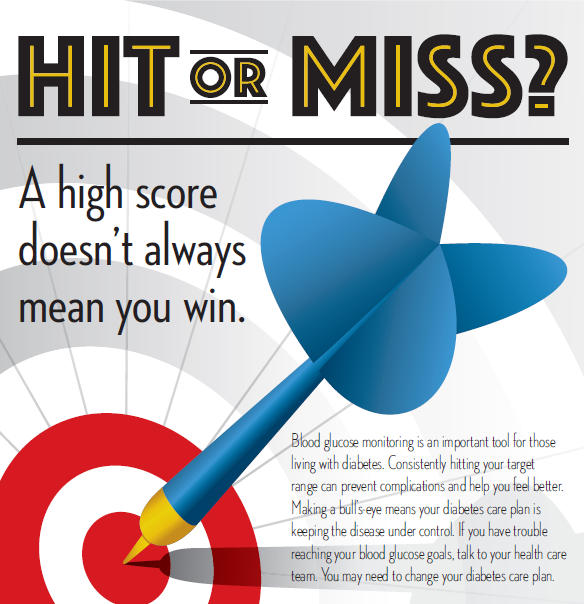Live Well
Getting Tested for Diabetes

Diabetes is a chronic disease that affects how your body turns food into energy. If you have diabetes, your body either doesn’t make enough insulin or can’t use the insulin it makes as well as it should.
A1C Test
One method used to determine if you have diabetes is the A1C test. Testing is simple and results are usually available quickly.
A1C is a blood test used to:
- Provide information about a person’s average level of blood sugar, called blood glucose, over the past three months.
- Help diagnose Type 2 diabetes, the most common type of diabetes.
- Help diagnose prediabetes, a condition in which your blood sugar is higher than normal, but not high enough to be called diabetes.
- Monitor your condition if you have diabetes.
This test measures how much glucose has been sticking to your red blood cells. Since each red blood cell is replaced by a new one every three to four months, this test tells you how high the glucose levels have been during the life of the cells. If most of your recent blood glucose readings have been near normal, the A1C test will be near normal (usually about 6 to 7 percent). If you’ve had many readings above normal, the extra glucose sticking to your red blood cells will make your A1C test read higher.
Eye Exam
Diabetic eye disease is a serious problem that can lead to loss of sight. Because diabetic eye disease can develop even when your sight is good, regular dilated eye exams are important for finding problems early. Some people may experience vision change. If you have trouble reading, if your vision is blurred or if you see rings around lights, dark spots or flashing lights, you may have eye problems. Be sure to tell your health care team or eye doctor about any eye problems. You should have your eyes dilated and examined once a year.
Blood Pressure
About 70 percent of adults with diabetes have high blood pressure or use prescription medications to lower high blood pressure. Maintaining normal blood pressure control can reduce the risk of eye, kidney and nerve disease by approximately 33 percent, and the risk of heart disease and stroke by approximately 33 to 50 percent. Healthy eating, medications and physical activity can help you bring high blood pressure down.
Source: Centers for Disease Control and Prevention
https://www.cdc.gov/diabetes/?CDC_AAref_Val=https://www.cdc.gov/diabetes/home/index.html
https://www.cdc.gov/diabetes/basics/getting-tested.html
https://www.cdc.gov/diabetes/basics/diabetes.html
*Statistics and information are accurate as of the time of publication and may change over time.
